Recent and highlighted publications are listed here. For a full list of Jan Strugnell and Ira Cooke’s publications check out their Google Scholar pages.
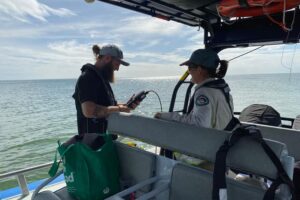
Joe Perkins detects toxic dinoflagellate species in Hervey Bay, Australia
Joe Perkin’s latest research, published in Marine Pollution Bulletin, provides the first comprehensive assessment of harmful dinoflagellate communities in Hervey Bay, a high-risk region for harmful algal blooms (HABs) in eastern Australia. Using DNA metabarcoding, the study identified a diverse range of toxic and non-toxic species, including several high-risk taxa ...
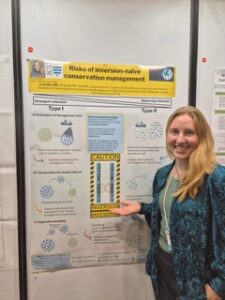
Nadja Schneller presents her review paper at the International Congress for Conservation Biology conference
With Nadja's review on the role of chromosomal inversions in the management of marine environments hot off the press in Molecular Ecology, she travelled to Brisbane to present this work as a poster at the ICCB conference. The implications of chromosomal inversions (and other recombination-blocking, large variants) for management are ...
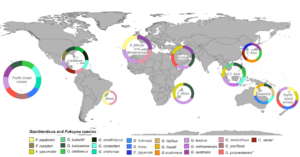
Ciguatera poisoning: A Review by Joe Perkins
Joe’s comprehensive review on ciguatera poisoning, just published in Harmful Algae, offers an in-depth examination of the ecological dynamics of the toxic dinoflagellates Gambierdiscus and Fukuyoa. The paper evaluates current detection methods and provides innovative solutions to enhance monitoring and reduce the risk of ciguatera poisoning. This review serves as a valuable resource ...
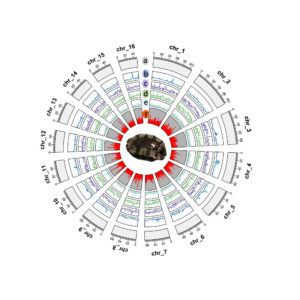
In pursuit of the perfect abalone genome
Roy's beautiful genome paper is published today in Nature Scientific Data. Using a combination of Hi-Fi sequencing and Omni-C scaffolding, Roy managed to obtain an extremely high quality genome for this species. Even, better, this genome includes gene models generated with PacBio Iso-Seq making it by far the best abalone ...
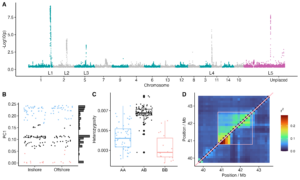
Chromosomal inversions harbour deleterious mutations in the coral, Acropora kenti
A new paper led by Jia shows that there are at least five large, highly polymorphic chromosomal inversions in Acropora kenti, a widespread coral on the Great Barrier Reef. This paper highlights the potential importance of structural variation in corals, and the need for new approaches to characterise it. Published ...
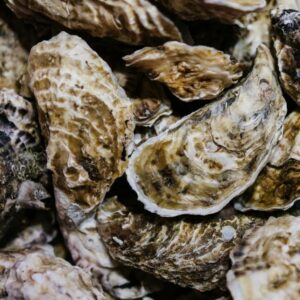
Tropical blacklip rock oysters are great at gobbling up nutrients
Ben Rennie led a great study as part of his Masters project to investigate filtration rates and the bioremediation potential of the tropical blacklip rock oyster, Saccostrea lineage J, which was published in Aquaculture Environment Interactions. The study found that the Blacklip Rock Oysters significantly reduced total nitrogen, total phosphorous, ...
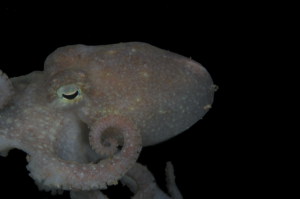
Octopus DNA predicts future West Antarctic ice sheet collapse
Sally Lau led a fantastic study published in Science which used octopus DNA to discover that the West Antarctic Ice Sheet (WAIS) likely collapsed during the Last Interglacial period around 125,000 years ago - when global temperatures were similar to today. This provides the first empirical evidence that the tipping ...
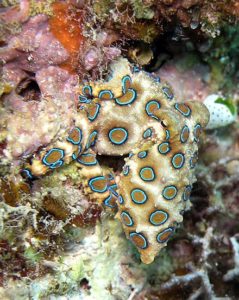
There are many more blue-ringed octopuses than you think there are…..
Brooke Whitelaw led a fantastic study investigating species diversity in the iconic blue-ringed octopus genus, Hapalochlaena. Using genome-wide SNP data and mitochondrial loci, Brooke found 11 relevant taxonomic units - likely all species, suggesting MUCH greater diversity than is currently described! The origin of the genus Hapalochlaena was predicted to ...
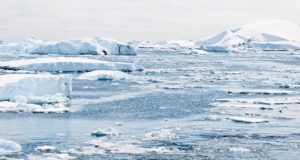
Genomic evidence for West Antarctic Ice Sheet collapse during the Last Interglacial Period
The latest in Antarctic research from the Marine Omics lab, Sally, Ira and Jan used a novel genomic approach to answer if the West Antarctic Ice Sheet (WAIS) had collapsed during the Last Interglacial period, and they did so by looking into the genomic loci of an Antarctic octopus (Pareledone ...
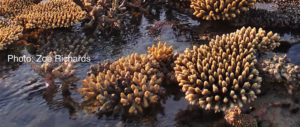
DNA reveals the past and future of coral reefs
A new paper by Jia in Molecular Biology and Evolution showcases the power of whole genome sequencing to understand adaptive evolution in corals. Thanks to our collaborators in Western Australia we were able to obtain samples for deep WGS on 75 corals, including samples from the inshore Kimberley reefs and ...